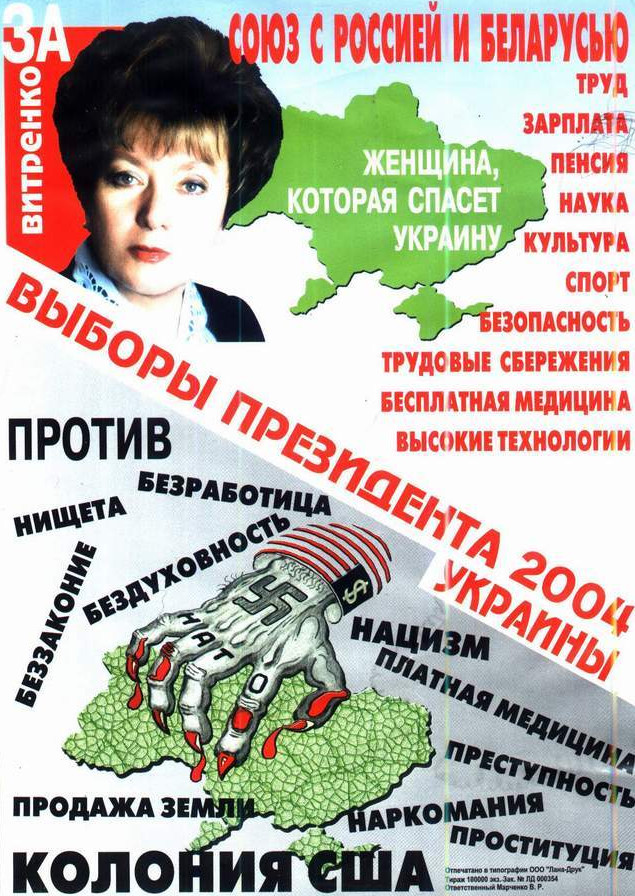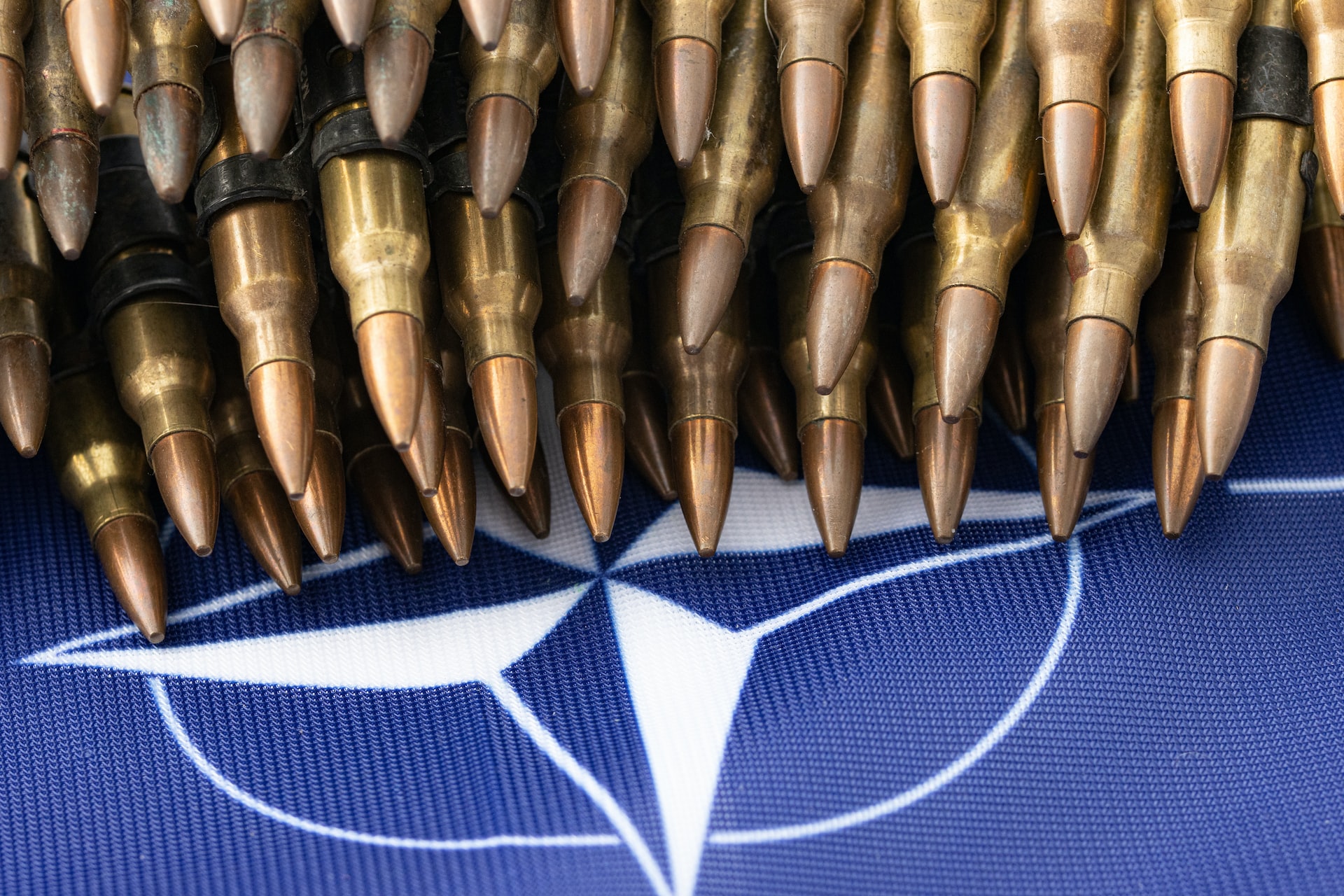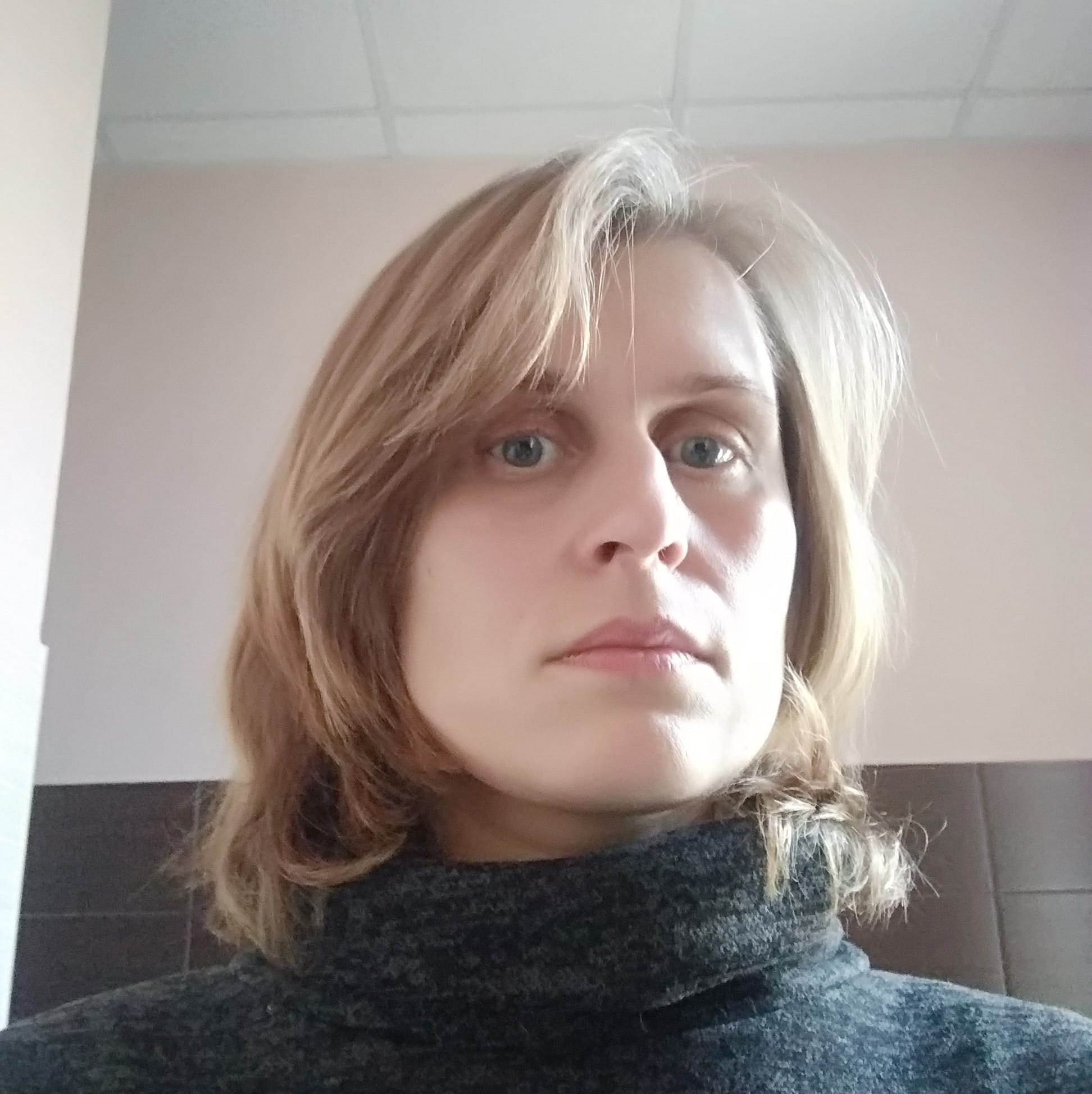Russia and its local supporters managed to convince the majority of Ukrainians that they did not need Euro-Atlantic integration. But the armed aggression against Ukraine has brought this result to nought.
In the last days of November, a meeting of NATO foreign ministers took place in Bucharest, where they once again discussed the prospect of Ukraine’s membership in NATO. The answer of the Secretary General of the Alliance, Jens Stoltenberg, was highly straightforward: first, we need to win the war. ‘If Ukraine fails to win as a sovereign independent and democratic state, then the question of membership disappears,’ Stoltenberg said.
It is not the first time Ukraine has heard a refusal from the Alliance in its 30 years of relations. It is a vicious circle: Ukrainians want to join NATO to safeguard their country and stop the war while enjoying the protection of powerful North American and European countries. However, it will not be able to join until it is able to defend itself. But earlier, this happened in the context of the ambiguous attitude of Ukrainians to NATO membership. In 2022, for the first time in the history of Ukrainian independence, the majority of Ukrainians view NATO accession as a positive thing. But why did Ukrainians hesitate for so long? Who set them against Euro-Atlantic integration? What could Russia possibly have to do with this? :)
First steps to NATO
The history of Ukrainian cooperation with NATO began in 1992 when Ukraine joined the North Atlantic Cooperation Council (now the Euro-Atlantic Partnership Council), an institution created after the end of the Cold War to cooperate with non-member states. Two years later, Ukraine joined the Partnership for Peace military cooperation program, also explicitly created for cooperation with post-Soviet states and some European countries that were not members of the Alliance. Ukraine received its first assistance from NATO in 1995 after the Kharkiv drinking water disaster, which left one million residents without water and under the threat of an epidemic due to the contamination of the local river with sewage.
In 1997, relations between Ukraine and NATO moved to a new level: the Charter on a Distinctive Partnership between NATO and Ukraine was signed at the Madrid Summit. The parties exchanged official representations: the NATO Information and Documentation Centre was opened in Kyiv, and a Ukrainian government representative was assigned to NATO headquarters.
Little was said about Ukraine’s Euro-Atlantic integration in the first years of independence. A poll conducted in May 1997 showed that 37% supported joining the bloc, 28% were against it, and 35% were undecided. But that fateful year, everything began to change.
Zhirinovsky in a skirt
The first large-scale NATO-related sensationalist campaign is associated with the name of the political activist Nataliya Vitrenko. Having split from the Socialist Party of Ukraine in 1996, she created the Progressive Socialist Party of Ukraine (PSPU, now banned along with other pro-Russian political forces). Her strategy was to divide the ‘red’ electorate using aggressively anti-Western and pro-Russian rhetoric (alliance with Russia and Belarus, two state languages (Ukrainian and Russian), abandoning relations with the International Monetary Fund, etc.). Due to the extreme radicalism of her statements, Vitrenko was compared to Russian politician Vladimir Zhirinovsky, and she cooperated with the ideologist of the ‘Russian world’, Alexander Dugin.
In 1998, the PSPU managed to bite off a piece of the voter base of communists and socialists and enter the Parliament. In 1999, Vitrenko ran for president. Unlike other left-wing candidates such as Communist leader Petro Symonenko and Socialist leader Oleksandr Moroz, who emphasised nostalgia for Soviet times and criticised incumbent President Leonid Kuchma, Vitrenko focused on the image of an external enemy. She predicted a terrible economic crisis in the country, complete with the bankruptcy of banks, deliberate accidents at enterprises, and social riots, after which ‘NATO troops will enter Ukraine and finish colonising the country’. ‘To give away the country so easily and simply?! Leaving Ukraine to be torn apart?! Colonised?!‘ the leader of the PSPU addressed the supporters at the rallies. The time to demonise NATO was perfect: the Alliance was much criticised (often by Russian media and politicians) for the war in Yugoslavia. Vitrenko used this rhetoric in her parliamentary speeches.
There is a lot of evidence that the PSPU received funding from Russia, particularly from a crime boss, Maxim Kurochkin, who tried to protect his business interests in Ukraine through Vitrenko. There is also the theory that the PSPU leader was supported by Russian special services, which used her to spread anti-NATO sentiments and disrupt joint programs with the Alliance.

The parliamentary story of the PSPU ended in 2002, and the party itself fell into marginalisation over the next few years. But other political forces picked up the anti-NATO torch, which used fearmongering about NATO during their parliamentary campaigns. Opinion polls showed that the number of supporters of joining NATO dropped to 32%, while those who opposed it increased to 32.2%. In 2003, the number of supporters decreased by another ten points. By 2014, the share of Ukrainians who firmly supported Euro-Atlantic integration fluctuated between 15 and 25%.
Greetings from Russia
Despite these sentiments, Ukraine was rushing towards NATO at full speed in the first four years of the new millennium.
In May 2002, the National Security and Defence Council of Ukraine, under the leadership of President Leonid Kuchma, adopted the Strategy on NATO, which envisaged a revision of the non-alignment policy in favour of membership in the Alliance. After that, within the Partnership for Peace program framework, Ukraine and NATO signed a memorandum of support for NATO operations, resulting in Ukraine's participation in the US operation in Iraq.
In the same year, 2003, Russia showed its true face for the first time during the conflict around the island of Tuzla, and Ukraine rushed even faster to become a member of NATO. On June 15, 2004, the second edition of the Military Doctrine of Ukraine, approved by a decree of Leonid Kuchma, included a provision on Ukraine’s Euro-Atlantic integration policy, the ultimate goal of which was to join NATO. However, a month later, on July 15, 2004, President Kuchma issued a decree cancelling NATO membership as a state policy objective. Henceforth, it was only about ‘deepening relations with NATO and the European Union as guarantors of security and stability in Europe’.

According to the official version, the NATO-Ukraine Commission rejected Ukraine’s membership because of issues with democracy, which NATO began to talk about in 2002. But by a strange coincidence, Putin met with Kuchma the same month and publicly stated that Ukrainian-Russian integration was being hindered by ‘agents from Western countries’. For the first time, he made it clear that Moscow considers Ukraine to be its sphere of influence and will hinder Ukraine’s plans to integrate into European and North Atlantic structures.
As former US Ambassador to Ukraine William Miller recalled, NATO was more interested in Russia’s opinion than Ukraine’s. ‘As it happens, first Yeltsin and then Putin later moved closer to NATO than Ukraine, and Russia became directly influential in NATO affairs in Brussels because Russia had to be included. Russia was the political threat problem, and insofar as they wanted to be part of the solution, they'd have to be involved,’ he wrote in his memoirs.
The Alliance promised to return to the issue of Ukraine’s accession to NATO after the 2004 presidential elections if they were democratic. But, as you know, it was the worst election in the history of independent Ukraine. Numerous incidents of electoral fraud sparked the Orange Revolution. In the wake of the Orange Revolution’s victory, as part of the opposition to the new government, there was a torrent of Russian and pro-Russian propaganda about Ukraine’s integration into the Western world, especially NATO membership. Increasing the pressure, propagandists expanded the arsenal of influence techniques: aside from political agitation at rallies, they also used mass protests, concerts by stars, teleconferences, and even religious processions to mobilise the public.
Who doesn’t like a sea breeze?
In 2004, presidential candidate Viktor Yanukovych said it was dangerous for Ukraine to join NATO. He said that Ukraine would lose its military-industrial complex because, due to the need to implement NATO standards, Ukraine would have to close its military factories and start procuring equipment from the West.
As a result, he enjoyed the active support of the Communists, who even tried to create an inter-fractional MP group, ‘Anti-NATO’, with the Party of Regions in the Parliament of the next convocation. But the real anti-NATO coalition was formed outside the parliament when Vitrenko, after failing miserably in the elections, joined forces with the Party of Regions and the Communist Party. With the support of some NGOs, such as war veterans and minor parties like the ‘Brotherhood’, the ‘coalition’ staged a large-scale anti-NATO performance in Crimea with the creation of ‘people’s self-defence’ units, attempts to take over the port, tent camps, clashes between opponents, declaring Crimea a ‘non-NATO territory’ and burning flags with NATO symbols. The protests took place in Feodosia, Simferopol, and Alushta and lasted for a month: from 26 May to 26 June 2006. The reason was the planned, but not formally approved by the Verkhovna Rada, Ukrainian-American peacekeeping exercises Sea Breeze at the Old Crimean training ground and the arrival in the port of Feodosia of the military transport ship Advantage, which delivered to Ukraine vehicles, small arms, construction materials, and special equipment to upgrade the training base of the Ukrainian Navy. The protesters shouted slogans: ‘We are not Yankees, but Slavs! Our brothers are Russians!’, ‘Russia is a friend, NATO is an enemy!’, ‘NATO is worse than the Gestapo’ and accused the Alliance of encroaching on Ukraine’s sovereignty, attempting to occupy Crimea and/or storing toxic waste on the peninsula.

In general, the objections of the ‘Ukrainian people’ against NATO were divided into four main groups:
— Joining NATO may provoke Ukraine's involvement in military conflicts.
— Joining NATO may negatively affect the economic situation of the country.
— Joining NATO increases the expansion of Western culture and morality.
Accession to NATO is incompatible with the course of neutrality proclaimed in the Declaration of Sovereignty of Ukraine and may entail deterioration of relations with certain states (primarily with Russia).
Vitrenko bluntly stated that ‘Russia is the guarantor of Ukraine’s non-aligned status in accordance with the 1994 Budapest Memorandum,’ which is why she was asking Russia for help. As a result, the Sea Breeze 2006 military exercise, which had been held annually before, was cancelled. The Russian media thoroughly covered all the events in Crimea. It was they who ‘found’ explosives and poisonous substances on the NATO ship, which provoked rumours about turning Ukraine into a ‘toxic waste dump’.
Another anti-NATO tactic was the demand to organise an all-Ukrainian referendum on joining NATO. Given the low level of support among Ukrainians, it was a win-win situation for the anti-NATO forces. The referendum was supported not only by the Communists and the Party of Regions but also, for example, by the Social Democratic Party of Ukraine (United), headed by Viktor Medvedchuk. The party even collected several million signatures in favour of holding the referendum, but the Central Election Commission did not recognise them as valid.
Eventually, the government had to admit that Ukrainians were poorly informed about NATO, had no understanding of what it was, and thus were opposed to Euro-Atlantic integration. For example, the Center on Information Problems of Territories of the National Academy of Sciences of Ukraine conducted a national sociological survey in November 2007 and found that only 18.6% of Ukrainians considered themselves well-informed about NATO, 31.4% had a good understanding, 49.9% had no idea. Citizens had the greatest lack of information about the military (17.6%), political (16.7%), legal (14.7%) and economic (14.3%) dimensions of the Alliance and its cooperation with Ukraine.
Anatoliy Hrytsenko, Ukraine's Defense Minister at the time, promised to launch ‘a comprehensive information campaign that will help to change the situation within two to three years radically’. But it was impossible to organise an information campaign due to financial constraints. Pro-Ukrainian forces were afraid to openly campaign for NATO because of the possible loss of voter support, and the situation with the attitude in society only worsened over time.
Standing prayer against the Alliance
In 2008, Ukraine moved closer to NATO membership as President Viktor Yushchenko, Prime Minister Yulia Tymoshenko, and Chairman of the Verkhovna Rada Arseniy Yatsenyuk wrote a joint letter to NATO asking it to commence the accession. The Alliance promised to consider the issue at the NATO summit in Bucharest in April 2008. In response, the Party of Regions and the Communists blocked the work of the parliament, demanding that the letter be withdrawn. They staged a series of large rallies in Kyiv and many other major Ukrainian cities during the summit.
The protests were held on an unprecedented scale. For example, participants of demonstrations in different cities communicated via telebridges. Russian and Ukrainian pop stars, members of parliament, and Ukrainian television stars performed on stage. In particular, Braty Karamazovy and Agatha Christie bands performed on the Maidan Nezalezhnosti square in Kyiv, Oleg Gazmanov performed in Kharkiv, and People’s Artist of Ukraine Sofia Rotaru in Donetsk. In additioe, an anti-NATO procession was held the day before in Kyiv. The protest participants claimed that they ‘stood in defence of the values of the Eastern Slavic Orthodox civilisation’, and as they marched through the city, they shouted anti-NATO slogans and held ‘standing prayers’ near the building of the NATO Information Center at the Ministry of Defense of Ukraine.
In 2008, Ukraine did not receive a NATO Membership Action Plan, which would have set off the accession process. Although later, the Wikileaks website published secret documents of US diplomatic correspondence, which showed that the granting of the NATO Membership Action Plan to Ukraine and Georgia was blocked by Germany and France, who did not want to ‘stump Russia’. Organisers of the rallies declared the refusal to grant Ukraine a Membership Action Plan as ‘their victory’. In this sense, this was true because this way, Russian 'agents of influence' in Ukraine were expressing Russia's views to the collective West.
In 2010, Yanukovych became president, and the Ukrainian Parliament adopted his bill that excluded the goal of ‘integration into Euro-Atlantic security and NATO membership’ from the country’s national security strategy. For Yanukovych, the anti-NATO rhetoric lost its significance, and only the marginal Vitrenko, who by that time had fallen out not only with pro-Western Ukrainian politicians but also with pro-Russian ones, in particular with the Party of Regions and the Communists, continued to fight the ‘evil NATO’ in a low-profile manner.
The seizure of Crimea and Russian aggression in the Donbas increased the number of NATO supporters in Ukrainian society (excluding residents of the occupied territories) to almost 48%. Support for NATO didn't decline below 40% until 2022, although isolated attempts to convince Ukrainians that ‘NATO is going to turn Ukraine into its military base’ continued until 2017. The year 2017 saw the adoption of a law that consolidated Ukraine’s course towards NATO membership, and in early 2019, the required amendments were made to the Constitution. Silence reigned in Ukraine on this occasion: there were no rallies, concerts, or any processions of NATO opponents. The voices of protest could only be heard in the Parliament among the already relatively small pro-Russian opposition.
NATO as an existential threat to Russia
As the influence of pro-Russian anti-NATO forces declined in Ukraine, Russia's interest in the issue did not wane. Quite the contrary, the aggressor country began directly opposing Ukraine's NATO membership rather than through its proxies.
During 2021—2022, NATO became the centrepiece of Russian propaganda. According to Vox Ukraine, the most important fakes that shaped the new Russian reality were:
'The NATO Alliance promised Russia not to expand to the East, but later violated its commitments'.
'NATO constantly carries out anti-Russian provocations and moves towards Russian borders'.
'NATO is increasing its presence in Ukraine, which poses a danger to Russia'.
Nowadays, the ‘NATO threat’ is used to justify the beginning of the full-scale war (for example, the idea that Ukraine, had it joined NATO, would have tried to take back Crimea by force) and Russian military setbacks (Russia is at war with NATO, not with Ukraine).
During the full-scale war, there were several attempts to make Ukrainians ‘disappointed’ in NATO and convince them that we do not need Euro-Atlantic integration, that the Alliance betrayed us, failed to assist us in full, or something else. The first wave was connected with the call of the Ukrainian authorities to NATO to ‘close the sky’ over Ukraine (this prospect was unrealistic because it would mean a direct confrontation between the Alliance and Russia, which the West is trying to avoid at all costs). Also in March, in the context of peace talks with Russia, Ukrainian politicians, including President Volodymyr Zelenskyy, made statements about possible alternatives to joining NATO in the form of certain international security guarantees. However, in April, this rhetoric disappeared. The last wave of ‘disappointment’ hit the media space at the end of September when Ukraine applied for NATO membership under the accelerated procedure, and the Alliance's response was rather reserved. However, these discussions did not have a significant impact on the public's opinion.
Russia spreads anti-NATO fakes not only inside the country but also in the West, trying to convince at least some Europeans that it was forced to attack Ukraine. But there is no point in dispersing propaganda in Ukraine anymore: support for NATO among Ukrainians in 2022 reached a record 83%, and the number of anti-NATO supporters fell to a record low of 4%. Russia has lost the last lever of influence — the demand to hold a referendum. Anti-NATO propaganda in occupied territories remains the only threat. Once Ukraine reclaims these territories, the people living there will need to be educated on what NATO truly is and why it is not our enemy.
Photo: Unsplash




